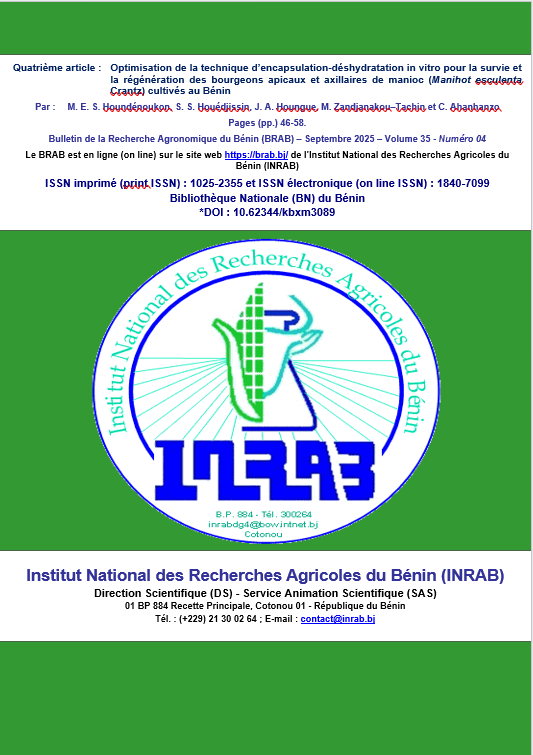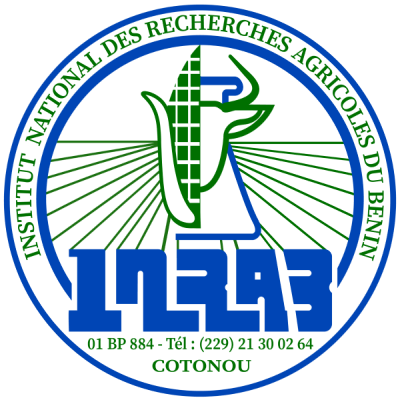Optimization of Encapsulation-Dehydration Technique for In Vitro Survival and Regeneration of Apical and Axillary Buds of Cassava (Manihot esculenta Crantz) cultivated in Benin
DOI:
https://doi.org/10.62344/kbxm3089Keywords:
Osmotic dehydration, Manihot esculenta, varietal sanitation, in vitro regeneration, low temperatureAbstract
Encapsulation–dehydration is a technique used in cryotherapy aimed at preserving plant tissues. The study evaluated the impact of saccharose concentration, temperature, and incubation time on the survival and in vitro regeneration of the apical and axillary buds of two cassava accessions cultivated in Benin. The method employed is based on the use of calcium alginate, saccharose, and low temperatures. An analysis of variance as well as a binary logistic regression were performed. The results revealed that the water loss of explants, as well as their survival and regeneration, varied significantly depending on saccharose concentration, incubation duration, and temperature (P < 0.0001). Regardless of the type of explants and the accession, a concentration of 1.5 M saccharose led to a water loss greater than 70% in apical and axillary buds. The highest survival rate was observed with explants treated with 0.75 M saccharose, with axillary buds of accession 1 showing the best resilience. A short incubation of 5 hours at 4°C was identified as the optimal condition to maximize survival and regeneration of explants. At -20°C, limited regeneration is observed, particularly in the apical buds of accession 2 (40%). A short exposure (05 h) at -20°C allowed limited regeneration, especially for the apical buds of accession 2 (40%). After 05 h at -20°C, regeneration is low in apical buds (10% for accession 1 and 40% for accession 2) and becomes almost null after 10 hours, except for the apical buds of accession 1 (20%). These results provide valuable insights for optimizing crucial information for the in vitro encapsulation–dehydration technique in order to sanitize cassava varieties infected by cassava phytopathogens, particularly viruses.

Published
Issue
Section
License
Copyright (c) 2025 Bulletin de la Recherche Agronomique du Bénin

This work is licensed under a Creative Commons Attribution-NoDerivatives 4.0 International License.
Les articles publiés par le Bulletin de la Recherche Agronomique du Bénin sont en libre accès. Ils sont gratuits pour tout le monde, immédiatement téléchargeables dès la publication et distribués sous la licence CC BY-NC-ND (https://creativecommons.org/licenses/by-nc-nd/4.0/).







